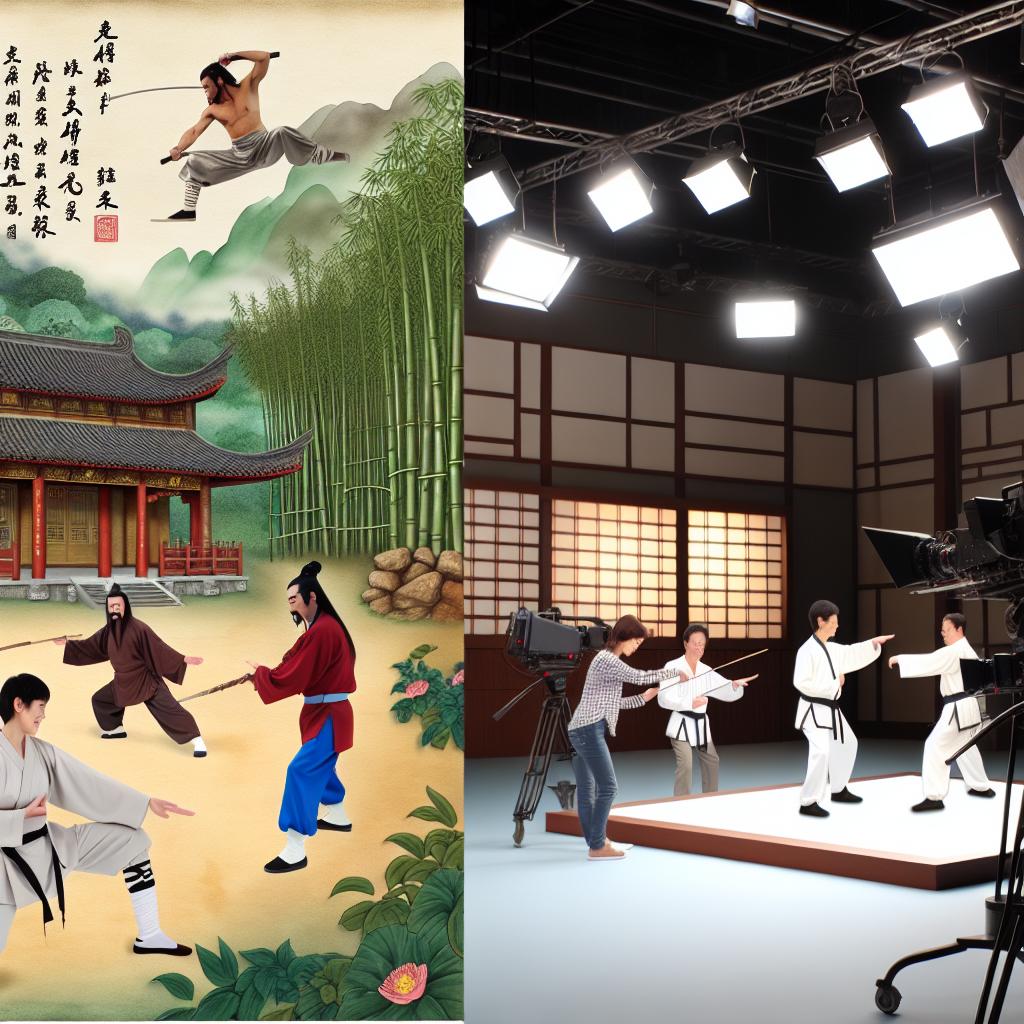
The Legacy of Kung Fu in Modern Martial Arts Television
Kung Fu, with its ancient roots and philosophical underpinnings, has had a significant impact on modern martial arts television shows. As a form of martial arts that combines physical prowess with meditative discipline, it provides a rich tapestry for storytelling and character development. This ancient practice, originating in China, extends beyond mere physical exercise. It is a holistic discipline that integrates body and mind, creating a profound basis for compelling narratives in modern media.
Historical Context of Kung Fu in Entertainment
The influence of Kung Fu in modern media can be traced back to the 1970s, a time when martial arts began to gain popularity worldwide. Shows like Kung Fu, starring David Carradine, introduced Western audiences to the transformative potential of martial arts. This show was instrumental in establishing foundational tropes that are still prevalent in today’s television narratives. During this era, the fascination with martial arts grew, as audiences were captivated by the exoticism and philosophical depth of Kung Fu.
Within the broader historical context, Kung Fu’s templates played a crucial role in shaping not just the genre but also inspiring cultural exchange. The emergence of martial arts films during the 1970s introduced characters and storylines that broke traditional Hollywood action motifs. Moreover, they paved the way for future incorporations of Eastern philosophies into mainstream entertainment.
Philosophical Elements
Authentic Kung Fu is deeply rooted in Eastern philosophy, emphasizing principles such as balance, patience, and humility. These themes are often woven into the storylines of modern martial arts shows. Characters typically embark on self-discovery journeys, illustrating how martial arts can lead to personal growth and overcoming adversity. This thematic depth adds layers to character arcs and plot development. Such principles not only provide substance but also offer viewers an opportunity to witness the characters’ evolution.
The philosophy inherent in Kung Fu transcends the confines of mere action and violence. It imparts valuable life lessons that promote mental fortitude and emotional resilience. Through the portrayal of struggles and triumphs, these shows aim to mirror the profound impact of martial arts practice on an individual’s journey towards self-improvement.
Character Archetypes
The archetype of the wise, philosophical martial artist mentor appears frequently in contemporary martial arts television, echoing the traditional Kung Fu master. These mentors often guide protagonists in both combat and life lessons, thus emphasizing the dual nature of martial arts as both physical training and a mental discipline. The mentor-student dynamic is critical in evolving storylines and deepening character development.
By incorporating these archetypes, modern shows acknowledge Kung Fu’s traditional narrative elements while also offering fresh interpretations. These relationships often highlight the transformation of raw potential into mastery, exemplifying the transfer of knowledge across generations. Viewers witness how mentors, through patience and tutelage, instill values that surpass mere technical prowess, aiding the protagonists in achieving a harmonious balance within themselves.
Martial Arts Choreography
The choreography in modern martial arts television often showcases fluid, precise movements characteristic of Kung Fu. This influence extends to the cinematographic techniques used to capture these sequences, often highlighting the grace and speed of the martial arts discipline. Contemporary shows frequently employ expertly coordinated fight scenes that pay homage to Kung Fu’s kinetic artistry.
Choreographers focus on authenticity when it comes to portraying battles with a sense of realism. The attention to detail in the execution of movements is indicative of the meticulous nature of Kung Fu training. Consequently, viewers are treated to cinematic demonstrations of skill and artistry that transport them to the battles themselves, providing a visceral experience that goes beyond mere visual spectacle.
Global Popularity and Adaptations
As an enduring global phenomenon, Kung Fu continues to influence various genres and cross-cultural adaptations. Modern shows incorporate diverse martial arts styles, with Kung Fu often providing the foundational base. This amalgamation can be seen in shows available on streaming platforms like Netflix and Hulu, which offer a wide array of martial arts programming that inherits elements from traditional Kung Fu.
Such global accessibility has allowed for the blending of martial arts forms from different cultures, creating unique renditions that appeal to international audiences. Often, these programs highlight the unity of purpose found in martial arts — an exploration of discipline and self-discovery that transcends cultural and linguistic barriers. Kung Fu acts as a bridge, connecting various traditions and legitimizing martial arts as not only a method of self-defense but also a medium of cultural narrative.
Conclusion
In summary, Kung Fu’s influence on modern martial arts television is multifaceted, shaping everything from narrative themes and character development to fight choreography and cinematography. As television continues to evolve, the integration of Kung Fu’s philosophy and technique remains a timeless source of inspiration for stories that resonate with audiences worldwide. The continued legacy of Kung Fu within entertainment underscores its significance and the universal appeal of its core philosophy.
Ultimately, Kung Fu’s enduring presence within modern media serves as a testament to its rich legacy, representing far more than an art form. It embodies a way of life, a journey toward harmony that reflects the resilience and fortitude of the human spirit. Through its philosophical teachings and artistic expressions, Kung Fu remains a vital and relevant influence in shaping narratives that foster both introspection and entertainment for audiences globally.
This article was last updated on: July 5, 2025

